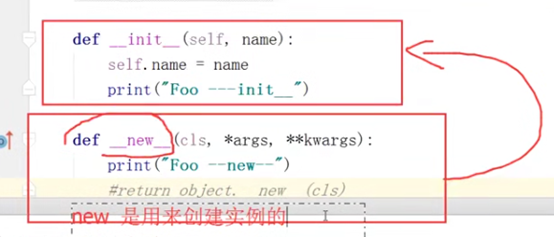第一段代码如下:
class Foo(object): def __init__(self,name): self.name = name print("Foo __init__") def __new__(cls, *args, **kwargs): print("Foo __new__") return object.__new__(cls) f = Foo("Td") 输出结果为: Foo __new__ Foo __init__
当把return object.__new__(cls)注释了后:
代码如下:
class Foo(object): def __init__(self,name): self.name = name def __new__(cls, *args, **kwargs): print("Foo __new__") #return object.__new__(cls) # cls此时表示Foo
f = Foo("Td") 结果为:Foo __new__
结论:
对比上述两种结果:可以得出__new__是用来实例化,在__new__中调用了__init__,简而言之,在实例化是是__new__触发了__init__方法。(默认就有)
return object.__new__(cls)的作用:继承父类的__new__方法。
(1) object.__new__(cls):继承父类的写法,
(2) cls表示子类(当前类对象)

源码学习地址:https://gitee.com/FelixBinCloud/PythonLearn/commit/384f0d77502ec9d02c66fcb9b7ba1672619885a1